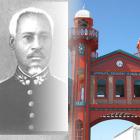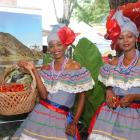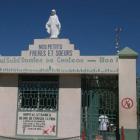ADVERTISEMENT
kanaval-2015
Street dancing - Haiti Kanaval Picture 2015
Street dancing - Haiti Kanaval Picture 2015
When slaves became emancipated in 1834, Caucasian plantation owners surrendered the Mardi Gras (Shrove Tuesday) Carnival to the ex-slaves, who turned it into a celebration of slavery's demise. They used Carnival as an opportunity to make fun of the ex-slave masters, and as a remembrance of slavery's oppression .
Today Caribbean Carnival merges fine arts, street theater, music and performance art, social commentary, extravaganza, and magical dimensions. In Europe it is celebrated mostly in southern portions of the continent: Spain, France, Italy, Portugal, Venice, and Bavaria, having strong Catholic traditions. South West England (Devon, Cornwall, and Dorset) also has carried the traditions of Carnival into the present day.
Street dancing - Haiti Kanaval Picture 2015
Street dancing - Haiti Kanaval Picture 2015
The Caribbean Carnival's origins began in archaic Egypt, and were then adopted by the Greeks and Romans as a pagan spring festival at a later period. Eventually the Catholic Church in Europe celebrated Carnival as Carne Vale, literal translation: flesh farewell. The words indicate reveling in the flesh and all its pleasures before the beginning of Lenten season, Ash Wednesday, when pleasure is forsaken for purification in preparation for Easter Sunday and Christ's rising from the dead.
European slave traders brought Carnival to the Caribbean county of Trinidad as an opulent masked ball for the elite class. They imported slaves from West and Central Africa, who brought with them elements of Carnival: masquerade, music, and song traditions. But the slaves were not allowed to participate in the lavish event meant only for the upper classes.
Michel Martelly, Sophia martelly and Evans Paul in Kanaval 2015
Michel Martelly, Sophia martelly and Evans Paul in Kanaval 2015
The term Mardi Gras" in French means "Fat Tuesday" and it is symbolized by consuming all forms of fat during the celebration. The word Carnival is made up of two Latin words, 'carne', meaning flesh and 'vale', meaning farewell. In the Catholic calendar carne vale, farewell to flesh, is a feast celebrated on the Sunday (Dimanche Gras), Monday (Lundi Gras) and Tuesday (Mardi Gras) before Ash Wednesday and marks the beginning of Lent and fasting. The Haitian Carnival consists of masquerade, dance, music and song. It is unique as a festival as it incorporates the street theatre, fine arts, organization of artistic and musical social functions, political commentary, spectator participation, spectacle and fantasy. Since Haitian religious practice has great influence of African traditions, like Africans they parade and move in circles in Mardi Gras costumes and masks because as per tradition, it is believed that moving in circles bring good fortune, heal problems, and chill out angry relatives who had died and passed into the next world.
Haitian women enjoying Kanaval 2015
Haitian women enjoying Kanaval 2015
Carnival originated as a pagan festival in the ancient Egypt, which was subsequently celebrated by the Greeks in honor of Dionysus, their god of wine and then the Roman Catholic Church later modified the feast of Saturnalia into a festival preceding the beginning of Lent.
The Carnival festival was transported to the Caribbean by the European slave traders. According to the customs, Catholics are not supposed to eat meat during Lent, and that is the reason they call the festival "Carnevale" or "to put away the meat".
However, what carnivals have evolved is a mass celebration of indulgences in dance, music, food, and drink, something which the Church never had in mind.
Haitian women enjoying Kanaval 2015
Haitian women enjoying Kanaval 2015
Carnival History in General & Haiti Carnival History
Carnival (also known as Kanavalin Haitian Creole) in Haiti started in the year of its declaration of independence in 1804. Haiti celebrates many carnivals throughout the year, however, its main carnival (Kanaval) starts on January 6th, on the twelfth day after Christmas leading up to Mardi Gras and serves as a final shebang before the 40-day abstinence of Lent. The day of 'Mardi Gras' is the day before the Ash Wednesday, and that is always 46 days before Easter. The three immediate days before the Ash Wednesday, a final celebration is hosted grandly in Haiti especially in Port-au-Prince and Jacmel. These three days are known as "les trois jours gras," or, "three fat days". The country celebrates this carnival with colorful grand parades of floats with elaborate costumes. There are musical competitions, cultural shows, and display of specific characters in the parades dedicated to the Carnival, are some of the major highlights of this annual event.
Haitian Kanaval fanenjoying Kanaval 2015
Haitian Kanaval fanenjoying Kanaval 2015
This Catholic festival has been imported to Haiti and other parts of the Americas by the early European settlers. In Haiti, the carnival is heavily influenced by local customs and rituals like Voodoo and Haitian music. People take part in parade floats where music systems are set up on trucks. Participants perform comedy acts often satirizing political topics. Music always remain the central part of the celebration. Popular Kompa bands like Djakout #1, T-Vice, Sweet Micky take part along with other lesser known bands, groups, who get good public exposure during the occasion.
Haitian Kanaval 2015, Life, Love and Happiness
Haitian Kanaval 2015, Life, Love and Happiness
Mardi Gras Costume History Vs Haiti Mardi Gras Costume
The celebration of Mardi Gras allows the Roman Catholics a period of merrymaking before the 40 days of lent. The celebration of Mardi Gras includes wearing masks and colorful costumes, dancing, music competitions, parades, etc. In the beginning, the earliest form of Mardi Gras costumes were centered around the practice of masking--obscuring the face to retain anonymity. However, in 1837, when the first organized parade came to the streets, the tradition of masking came under fire as the disguised bandits started acts of robbery and violence behind their covered faces. In 1857, the 'Comus Krewe' first introduced the concept of organized theme parade with decorated floats comprising fully costumed characters and that gradually became more and more widespread and extravagant. Mardi Gras costumes are primarily meant for adults.
Haitian Kanaval 2015, Life, Love and Happiness
Haitian Kanaval 2015, Life, Love and Happiness
Mardi Gras History & Facts as it Relates to Haiti Mardi Gras
Within the final week, the last three days are the main attraction of the celebration and are known as "les trois jours gras," or, "three fat days." The Carnival week is celebrated in a sophisticated manner with extravagant formal galas organized by many governmental offices, schools, musicians, or other organizations. Everyone wants to take part in the President's Ball where the President of Haiti crowns the Carnival King and Queen.
Face to face contact with Haitian culture during the Kanaval
Be in face to face contact with Haitian culture during the Kanaval
Haiti celebrates this festival with colorful grand parades of floats with elaborate costumes. There are musical competitions, cultural shows, and display of specific characters in the parades dedicated to the Carnival are some of the major highlights of this annual event. "Carnival" is pronounced as "Kan-a-val" by the Haitians. The day of 'Mardi Gras' is the day before the Ash Wednesday, and that is always 46 days before Easter. The final celebration is hosted grandly in Port-au-Prince and Jacmel and it is also celebrated to certain smaller scales in smaller Haitian provinces. Popular Haitian musicians release new albums specially created for the occasion. It is an opportunity for making political statements as well. The craftsmen from the art capital of Haiti or Jacmel prepare beautiful papier-mâché masks and costumes that represent religious or ghoulish creatures and often mocked political figures.

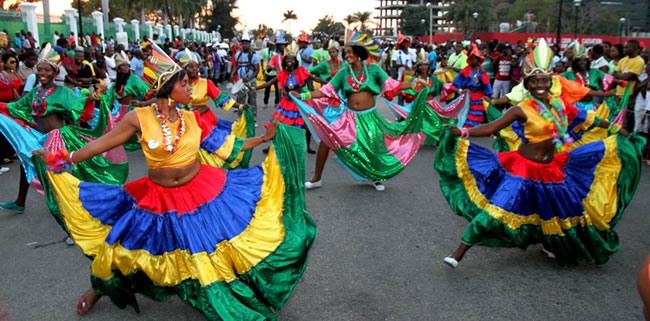
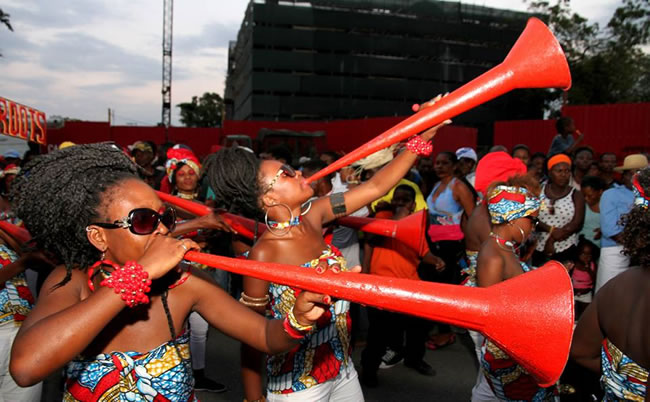
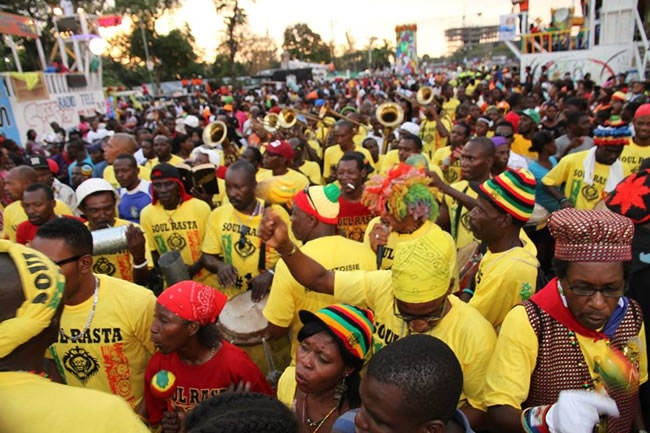
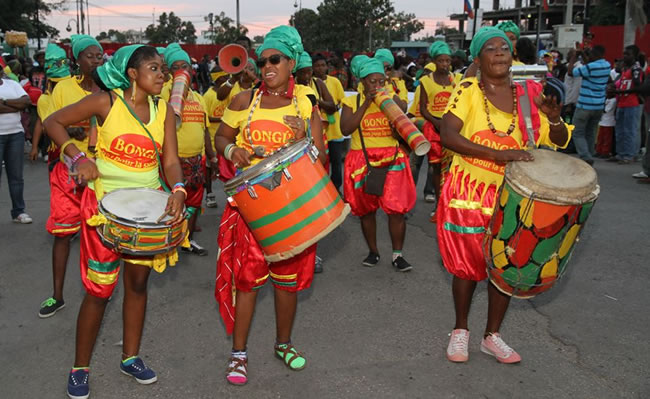

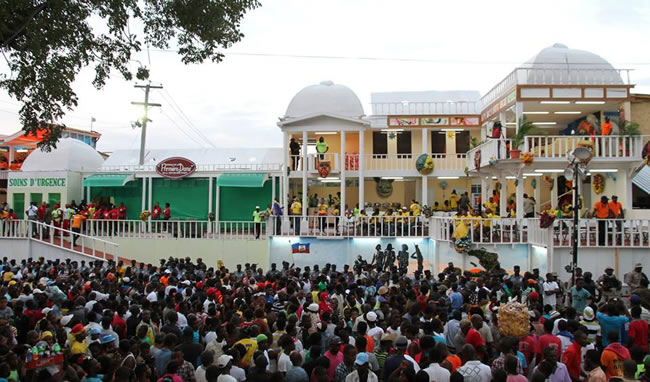
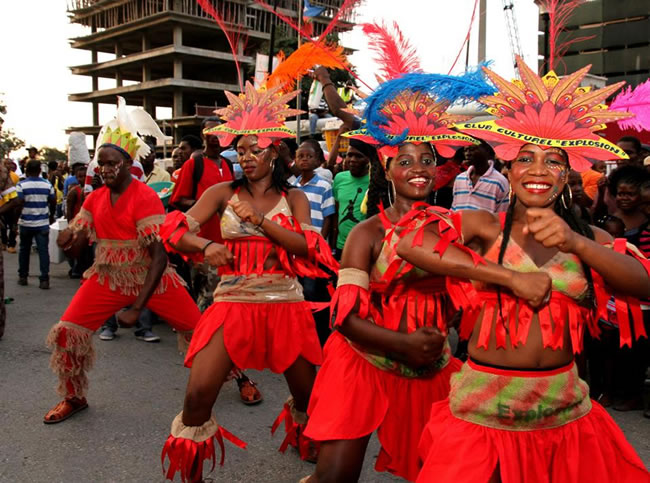
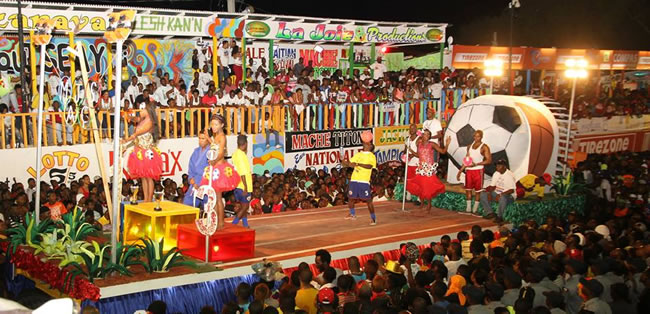
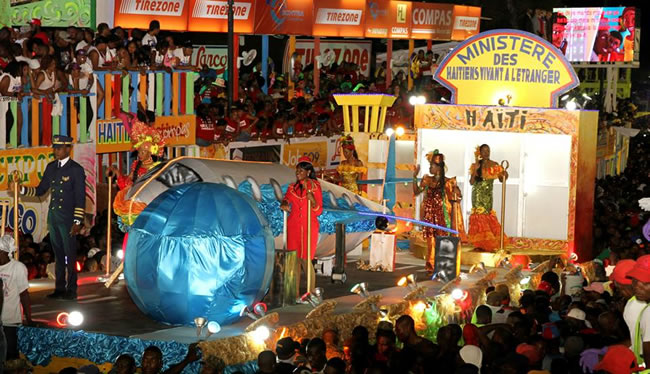
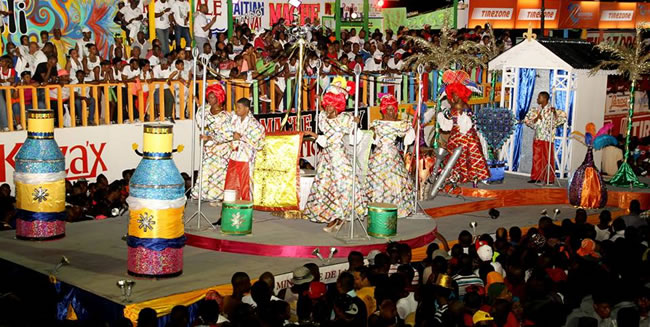
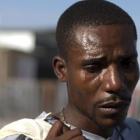 Deportation of Haitians in DR illegal, immoral and racist
Deportation of Haitians in DR illegal, immoral and racist 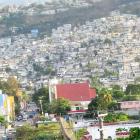 Petion-Ville, Haiti
Petion-Ville, Haiti  Grey Pierson visiting Tortuga Island in 1972
Grey Pierson visiting Tortuga Island in 1972  Philippe Vorbe entered world football Hall of Fame, CONCACAF
Philippe Vorbe entered world football Hall of Fame, CONCACAF  Jack Guy Lafontant resigns as Haiti Prime Minister
Jack Guy Lafontant resigns as Haiti Prime Minister  Haitiano-Japanese Naomi Osaka wins the US Open against Serena...
Haitiano-Japanese Naomi Osaka wins the US Open against Serena...  Haitians, the second largest black immigrant group in the US
Haitians, the second largest black immigrant group in the US  Paul Eugène Magloire, born in Quartier Morin
Paul Eugène Magloire, born in Quartier Morin 
